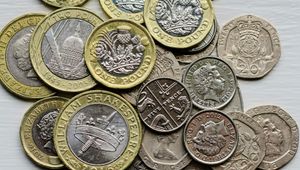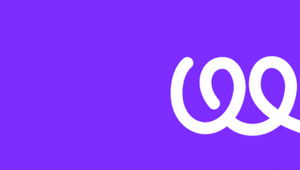
The Best Sport Partnerships of 2025 (So Far)... And How Brands Can Join the New Frontier

Success in the sporting arena can’t be achieved without impeccable teamwork – and that’s becoming just as true off the field. Sport partnerships are booming as one of the huge growth areas in the industry.
The days of ‘badging’ are over, the handshake on the pitch passe. To cut through in a crowded space, both brand and rightsholder have to go beyond the norm to connect with fans, break beyond echo chambers and build real brand value.
Boldspace’s head of sport Charlie Skillen and account manager Tom Hill look through the cream of the crop from 2025 so far.
Google Pixel x Liverpool and Arsenal
Partnerships only work when they tap into culture – and football fans are experts at spotting anything inauthentic. Google Pixel did this skilfully this season across their fleet of partnerships.
They kicked off with featuring Sol Campbell in an ad on ‘switching allegiances’ to drive adoption of the Pixel, leaning into his infamous 2001 free transfer from boyhood club Tottenham to hated rivals – and Pixel partners – Arsenal in 2001.
The hero video was full of clever references and knowing digs, with the former England defender changing his white jumper for red, hiding the ‘Lilywhites’ in his flower vase and his food (which was bashed-up Cockerel) being from ‘North Bank’ Butchers.
It spoke directly to Arsenal fans – but all football fans understood it and appreciated the humour (Well, maybe not all of them...).
Arsenal fans had less to cheer about watching fellow Pixel partner Liverpool storm to the Premier League title, with the partnership managing to play a central role in crowning the club’s 20th championship. Mohamed Salah scored in the demolition of Tottenham that sealed top spot – and celebrated by ‘borrowing’ a Google Pixel phone from a staff member, taking a selfie with fans in the Kop.
It didn’t even feel forced – but when the shot hit 12 million views in 48 hours, the brand integration became clear. Subtle, smart, and seamlessly tied into the moment, it showcased the power of using assets creatively and collaboratively. It’s a long way from a branded T-shirt and a forced smile.
That’s the key to making any partnership truly work – using the assets you receive to their absolute maximum capacity and working with collaborative and imaginative teams between club, brand and agency.
LEGO x Formula One
The ultra-elite world of F1 can feel like one long brand partnership at times – and while that can be exciting for those brands, it means it takes something special to stand out.
Good job, then, that LEGO pulled off one of the most ambitious, playful and eye-catching activations the sport has ever seen earlier this month at the Miami Grand Prix.
They turned the traditional pre-race drivers' parade into a jaw-dropping showcase of creativity and craft, with each team hitting the track not in life-sized replicas of their cars made entirely from LEGO.
The numbers behind the project were as impressive as the spectacle itself – each car used around 400,000 LEGO bricks, weighed twice as much as a real F1 car and took a staggering 22,000 hours (that’s over 900 days) to build.
It resulted in a viral cultural moment that delighted fans, earned global media attention and reinforced LEGO’s position as a brand that can connect across generations, platforms and passions.
Another masterful use of assets, this time the talent really shone through – Lewis Hamilton, Max Verstappen and the rest clearly loved taking part. Their reactions were the highlight of the full video – which has now clocked up over two million views in just over a week.
The unique elements of the brand and its product combined with the most famous faces and names in the sport to deliver something that delighted fans, made casual observers take notice and surely engaged a younger audience.
That’s why any brand gets into partnerships in the first place – leveraging the fame and fandom of sport and placing your brand within that. In an ever-noisier content battleground, its doing this with skill, showcasing personalities fans love and how your brand fits in, that will win the day.
FC Barcelona x Spotify
Barcelona’s Clasico win over Real Madrid earlier this month not only all but confirmed the Catalan giants winning LaLiga, but also played host to the latest iteration of their all-encompassing partnership with Spotify.
With the club still waiting to return to the newly-dubbed Spotify Camp Nou, they have had the app’s famous logo on their shirts this season but swapped it out on several occasions to promote different artists including Drake, Coldplay and the Rolling Stones.
The vital Clasico saw the turn of Travis Scott and his brand Cactus Jack. The one-off shirts immediately became collectors’ items, while the rapper performed a special gig in Barcelona the night before the game – the audience a who’s who from the worlds of sport, music and creators.
This is a partnership has transcended the pitch and instead built something that stands alone as almost a brand in itself – a convergence of sport, music, fashion and culture.
It only works on this magnitude with deep brand equity and deeper pockets – but it is a scalable concept… Margate shirts bearing the logo of the Libertines are always cropping up at indie nights and festivals, while teams like Venezia have captured the football/fashion crossover better than most.
Get it right, and you smash through the club echo chamber and the sports pages and start getting to the promised land of social virality and cultural relevance.
NBA x PlayStation x UEFA Champions League
Sometimes you just have to step back and say… that’s very cool.
PlayStation used their partnerships to create a world-first hybrid sport, played against an iconic Eiffel Tower backdrop and celebrating both the NBA Paris Games between San Antonio Spurs and Indiana Pacers, and the Champions League clash between PSG and Manchester City.
Big talent names helped bring it to life, while PlayStation were able to show off two top-tier partners at once. For the NBA, it was a chance to double down on their European footprint which is growing year-on-year – and set to skyrocket in the future.
Again, this showed iconic brands breaking out of their usual mold and collaborating on something which transcends their usual fandoms. For each sporting partner, a chance to grow relevancy and recognition on opposite sides of the Atlantic.
It proves how clever leverage of partnerships can shift and grow brand image and provide growth in different markets.
So what does this mean as we head to a summer filled with sporting action and new partnership deals?
It’s clear that we’ve entered a new era – fans and casual observers are responding to these deals in ways like never before. Successful partnerships aren’t confusing to fans – they’re becoming a primary way of connecting with sport, bringing it into new arenas.
The idea that fans don’t care about or don’t like partnerships is a misconception, usually perpetrated after seeing one too many ‘handshake on the pitch’ announcements and no subsequent offering.
Brands should keep demanding more from rightsholders, pushing for more and better assets and driving ultimate value from the association. A good rightsholder team will be open to new and exciting ideas, pushing their presence in particular sectors, making their suite of partnerships work together to provide a cohesive view of what that sporting entity is trying to ‘be’.
We can expect to see more like the above, at all levels – it’s not what Club X is and what Brand Y is, but what Club X’s partnership with Brand Y is. Smart activators will push the partnership to have its own clear identity and its own fan offering.
You don’t have to be a PlayStation or a Spotify to offer something real. You could be a fintech brand putting on advice clinics for fans, a drinks brand showing you understand supporters’ cheeky humour or a charity using your athlete access in a way that breaks out of the established echo chamber.
Rightsholders are fighting each other for a share of the same cultural space – it is brand collaborations that will likely win them the day. There will be more to come as brands and rightsholders keep pushing to appear in new spaces – don’t get left behind.















